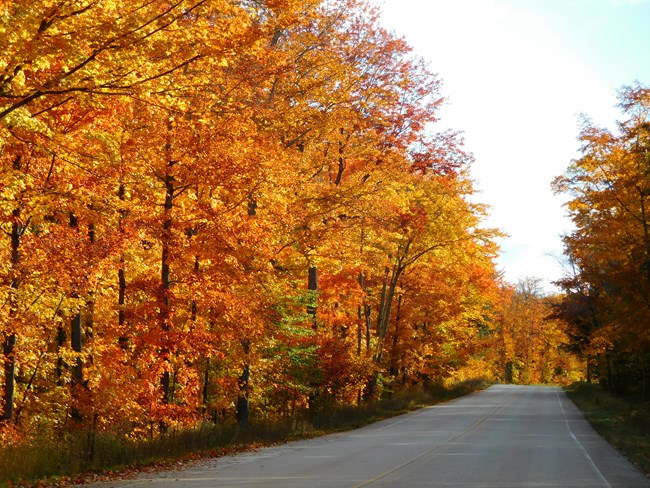
Hunting is permitted within the national lakeshore in accordance with federal migratory bird laws and federal and State of Michigan regulations. Along with fishing, hunting is an activity specifically allowed by the Congress of the United States when it authorized Pictured Rocks National Lakeshore in 1966. Hunting Opportunities With its varied topography, lakes, streams, and mixed coniferous and hardwood forest, Pictured Rocks provides habitat for a variety of game animals. Most hunting activities are for white-tailed deer, grouse, woodcock, bear, and snowshoe hare. Whether the method is archery, muzzle loading, or firearms, hunters find ample hunting opportunities from grown-over farm fields to backcountry cedar swamps. The hunting season begins with bear and grouse in September and continues through the winter with snowshoe hare. Refer to your "Michigan Hunting Guide" for specific dates and bag limits. A Michigan hunting license is required, and is available in local communities. Appropriate waterfowl stamps (state and federal) may also be required. Hunting dogs are permitted during legal hunting seasons when accompanied by a licensed hunter, and may travel unrestrained in all backcountry and non-developed areas of the lakeshore. When not actively engaged in hunting, dogs must be restrained on a six-foot leash. State hunting regulations apply in the use of dogs for hunting. Please review information concerning pets at the lakeshore. Regulations- No person may discharge a firearm or bow and arrow within a safety zone of 450 feet from an occupied dwelling, building, cabin, camp, or campground. - By federal law, trapping is not permitted within the lakeshore. - Motor vehicles are allowed only on designed roads within the lakeshore. Designated roads are those that are open to the general public and access visitor use areas. - While in a vehicle, firearms must be unloaded and enclosed in a case or unloaded and in the trunk. Arrows must be in the quiver when afield outside legal hunting hours. - Bait must be placed only on the ground. Unused bait must be stored in a sealed animal-proof container inside a hard-sided vehicle. - Tree stands, hunting platforms, steps, and ladders must be portable, and cannot be affixed or attached to any tree by nails, screws, or bolts. Screw-in steps are not allowed. - Ground blinds must be identified with the owner's name and must be removed at the end of the hunting season. Natural materials may be used but only of dead and down branches. - Camping is allowed with a valid permit in designated sites. - National Park Rangers and Michigan Department of Natural Resources Conservation Officers are authorized to enforce hunting and fishing regulations within the lakeshore. |
